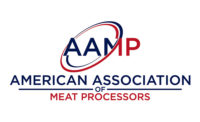AAMP
2021 Industry Outlook: Continued Growth & Challenges

2020 was quite the year for everyone, both on a personal and professional level. While we would like to put it behind us and return to the old normal, I think as an industry, we will continue to see lasting effects of the pandemic well into 2021.
COVID-19 forced processors to change how they conducted their business and made them re-evaluate how to meet the demands of the customer in a way that was sustainable for both their plant and employees. Many members made significant business model changes across several areas, which will likely continue into the new year. While members saw growth in their business, especially with new customers, but I believe there will be many challenges for them ahead.
Here are three expectations I have for 2021:
- In my 2020 outlook, I stated that business had been flowing back to the small processor for the last number of years due to the local food and farm-to-table movement. We couldn’t have anticipated the type of growth we would experience in 2020. When COVID-19 hit with all its vengeance, so did the demand for meat products. Trying to keep up with the demand was like trying to drink from a fire hose. Business for the small processor continues to be good but seems to have leveled off some. The demand for slaughter dates is still high and seems to be almost insurmountable. If you are doing retail, you know how busy it has been. I think the demand will continue but, maybe, not at the same pace as a year ago, unless we see sustained spikes in COVID-19. I feel our industry is in a good place, and if you have taken care of both your long-term and new customers, then you will continue to have a bright future in 2021 and beyond.
- This year will bring some new challenges on the regulatory front. We should see in the first quarter the new release of Appendix A, as it is in its final clearance with FSIS. This means that you will have one year from the release date to comply. We have not received an update on Appendix B. We are also looking at possible changes on the label approval front, as FSIS is considering not reviewing labels that qualify for generic label approval. AAMP submitted comments and asked FSIS not to do this, and instead designate a reviewer to handle these labels. The big challenge we will be facing may be FSIS posting proposed labeling changes to products that use a naturally based nitrate/nitrite. Celery juice powder and other similar ingredients will probably be recognized as curing agents which means you will no longer be able to call products uncured if they contain these. This could be a big issue for our industry as we will have some explaining to do to consumers.
- The biggest challenge facing processors in 2021 continues to be the lack of not only qualified workers, but workers in general. Hiring and retaining employees in our industry has always been a challenge, but it’s even worse now. With a decent economy the last few years, there are a lot more available jobs for people. It is a challenge to find a way to entice people to come and work in a processing plant. This topic has been the focus of many conversations I have had with processors all over the country. How much do you pay? What kind of benefits do you give? What are today's employees looking for? Processors will need to get creative in what they do to hire and retain employees, and I am confident that they will; their business depends on it. IP
Looking for a reprint of this article?
From high-res PDFs to custom plaques, order your copy today!






